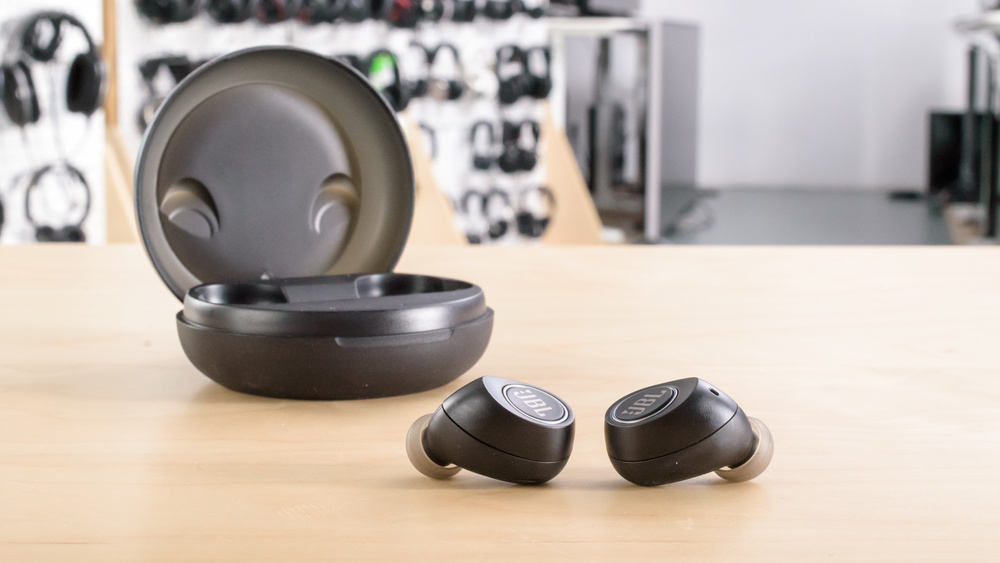Buying a pair of wireless earphones should not be hard, but with the number of brands and hundreds of models of earphones, choosing a pair of best wireless earphones that matches your Choosing tastes is not a simple task.
With earphones, there are many factors to consider, including the fit of the earphones, the headphone design, the type of headphone driver, wired or wireless, sound quality, and more. If you choose to lean your options towards better sound quality, the price may be higher.
5 Things to Consider When Choosing the Correct Earphones
Now that you know everything about the different types of earphones on the market, let’s dwell on the 5 most important things you should keep in mind when finding the right earphones.
1. Sound Quality
The first and most important factor that you should consider is the sound quality of the earphones. It is based on personal preference and may vary from one headphone user to another. However, to better evaluate sound quality, finding characteristics that can affect the audio experience is important. Let’s see them one by one.
Noise Cancelation
The noise cancellation property of earphones eliminates external noise and sounds and provides headphone users with a comfortable listening experience. The way noise-canceling earphones function is by creating sound waves that block out outside noise.
Surround Sound
The earphones that come with the Surround Sound feature provide sound effects similar to surround sound in movie theaters. Surround sound earphones have multiple speakers in each ear cup to project sound from different angles to create an unprecedented listening experience.
Stereo Sound
The earphones that come with the stereo sound feature provide an excellent and immersive listening experience. They incorporate separate channels in both ear cups that add amplitude to the sound. For example, you can hear guitar strings in one ear cup and violin in another.
Driver Size
The more drivers your earphones have, the better the sound quality. The driver is the most important element of your earphones because it produces the sound you hear.
Usually, larger drivers are considered better. However, they may not be able to support higher frequencies, making the sound slower. Therefore, some brands add separate drivers to the earphones to support high-frequency treble sound.
Frequency Response
The frequency response of a pair of earphones is the range of frequencies that it can support and accurately generate. Therefore, if you are a fan of bass, you should look for earphones that favor a lower bass frequency. And, if you are a treble fan, we suggest you look for earphones with a frequency response greater than 20,000 Hz. Knowing the frequency response of earphones is important to prevent ear damage and hearing loss.
Sound frequencies are broadly classified into three types as follows:
- Bass (low) – 20Hz to 200Hz: bass refers to the thumping sounds that we hear when listening to music, sounds where you can feel vibrations.
- Mids (medium) – 200 hertz to 5000 Hertz: mids are sounds that are neither too shrill, nor too deep. These are sounds that allow an audio experience to be well-balanced and not monotonous.
- Treble (high) – 5000hz to 20000Hz: treble refers to the high end of the frequency range, which is audible to the human ear. These are those sharp and sharp sounds that appear before us when listening to music.
Impedance
Impedance is the amount of electrical resistance that is needed to protect the drivers of your wireless earphones by measuring and limiting the current flowing through them. Therefore, if you are looking for earphones for commercial use with AC-powered adapters, we suggest you look for an impedance of up to 620 ohms. However, if you are looking for earphones for daily use with smartphones and portable media players, we suggest you look for an impedance below 34 ohms.
Frequency Responsiveness
This refers to the ability of earphones to accurately reproduce different sound ranges. Some wireless earphones are tuned more toward low frequencies, which will suit people who prefer heavy bass. On the other hand, people who prefer a balance between bass and treble can go for earphones with high-frequency responses.
Relevant resources- Best Trading Apps In India To Earn Money
Sound Signature
Like any other sign that is unique to its owner, the sound signature is the unique signature of a pair of earphones. For better understanding, each pair of earphones comes with a certain style of sound output. earphones made for heavy bass generate a lower frequency range in a more advanced way. Likewise, earphones made for faster treble produce better high-frequency sounds. These sound styles we refer to as sound signatures.
The following are the most commonly used sound signatures:
- High Bass
- High Treble
- V-Shaped
- Warm
- Balanced
2. Usage
The second most important thing to consider when looking for the right earphones is their usage. For various needs, different kinds of wireless earphones are appropriate.
Battery Life
We advise you to first check the battery life of any active noise-canceling or Bluetooth earphones you intend to purchase. You wouldn’t want the charge in your earphones to run out in the midst of a gripping movie scene or challenging game, would you?
4. Microphone
We advise you to purchase wireless earphones with built-in microphones if you’re searching for earphones or earbuds for remote working or gameplay. Different earphones have microphones installed differently. In some earphones, the microphone is installed on the wire; however, in others, it is built-in and not visible to the naked eye.
5. Connectivity
To attach to a device with a 3.5 mm input, the majority of wired earphones on the market have a 3.5 mm audio port. If the device you want to connect your earphones to does not have a 3.5 mm audio input, you may need a lightning to 3.5 mm converter or a USB Type-C to 3.5 mm convertor.








